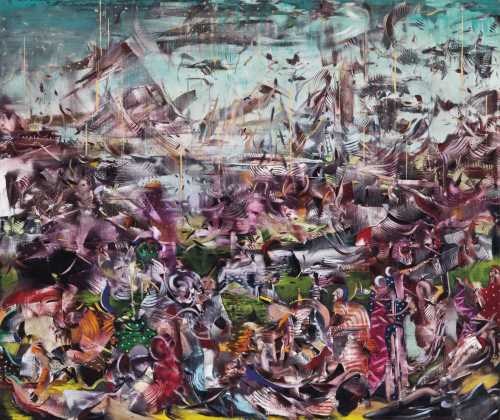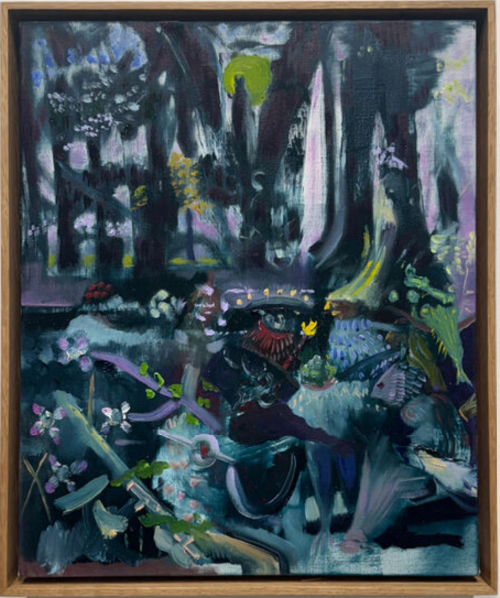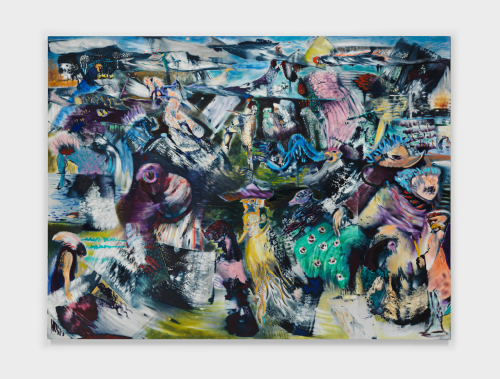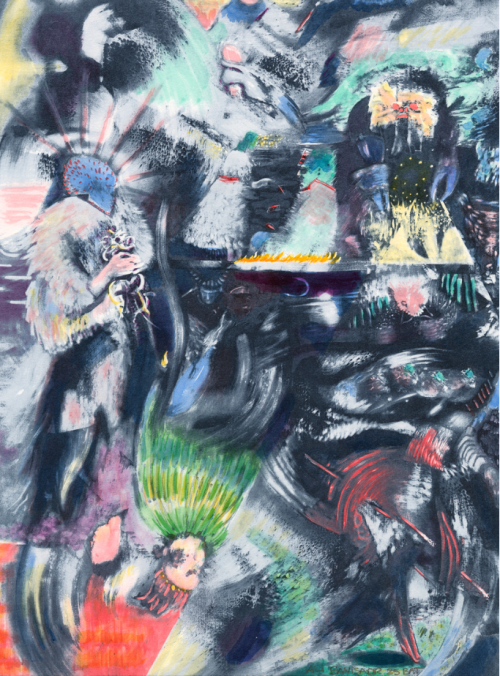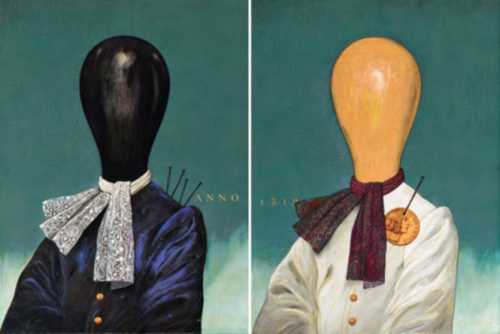- Burn it Down 2012
- oil on linen
- Painting
- 91.5 * 76 cm
- signed and dated ‘Ali BANISADR 2012’ (on the overlap)
Artwork Description
Apocalyptic, psychedelic and charismatic are just some of the words used to describe Banisadr’s work. His works give an impression of chaos yet the artist’s studio is always impeccable, with his brushes, paints and canvases perfectly aligned. His works exemplify otherworldliness that confronts the viewers. Burn It Down, executed in 2012 depicts a rendering of the natural and the digital. By joining depth along with characteristics of Iranian miniatures, Banisadr represents his own reality. He uses bold and vivid colours, and his painterly technique emulates the works of the great Venetian artists he so momentously admires, specifically Jacopo Tintoretto (1519- 1594). He also draws inspiration from the graffiti he grew up around in San Francisco from artists such as Barry McGee (b. 1966) and Margaret Kilgallen (1967-2001). In addition to these modern graffiti artists, a correlation to Gothic Flemish painter, Hieronymus Bosch (1450-1516) seems inevitable.
With compositions following sounds within a painting, Banisadr’s work is the middle ground where consonance and dissonance meet, where chaos and instability reign. ‘I became fascinated with all histories of war, conspiracies, colonialism and corruption,’ (www.ropac. net: Ali Banisadr (2010) - Galerie Thaddaeus Ropac) he explained. His Iranian heritage, or what he remembers from the time he lived there, makes appearances subconsciously as he never deliberately includes elements of his background. Anguish and seclusion are among the themes Banisadr explores in his work, and although these may seem like darker themes, he brings in elements of joy and delight with the palette he chooses. Through the use of a vibrant palette, bulky brushstrokes and a gestural composition, Banisadr not only evokes his frenzied recollections of transposition and war but also reveals his various artistic influences. Projecting a sense of mayhem and carnage he felt during those years in his home country, his work continues to aesthetically provoke the viewer through pandemonium.
This hip New York based artist was born during the Islamic revolution of 1976 in Tehran, after which his family left for Turkey in 1978 and later to California. At the turn of the millennium, Banisadr moved to New York to study at the School of Visual Arts from where he received his BFA, and then his MFA from the New York Academy of Art in 2007. He hosted his first solo exhibition in 2008, and has had a multitude of international shows. His works traverse through his trail amidst art history. Combining various elements from different time periods and cultural aspects, Banisadr materialises form and imagery in explosive compositions to produce a domain of irrational fantasy based on rational philosophical systems.
With compositions following sounds within a painting, Banisadr’s work is the middle ground where consonance and dissonance meet, where chaos and instability reign. ‘I became fascinated with all histories of war, conspiracies, colonialism and corruption,’ (www.ropac. net: Ali Banisadr (2010) - Galerie Thaddaeus Ropac) he explained. His Iranian heritage, or what he remembers from the time he lived there, makes appearances subconsciously as he never deliberately includes elements of his background. Anguish and seclusion are among the themes Banisadr explores in his work, and although these may seem like darker themes, he brings in elements of joy and delight with the palette he chooses. Through the use of a vibrant palette, bulky brushstrokes and a gestural composition, Banisadr not only evokes his frenzied recollections of transposition and war but also reveals his various artistic influences. Projecting a sense of mayhem and carnage he felt during those years in his home country, his work continues to aesthetically provoke the viewer through pandemonium.
This hip New York based artist was born during the Islamic revolution of 1976 in Tehran, after which his family left for Turkey in 1978 and later to California. At the turn of the millennium, Banisadr moved to New York to study at the School of Visual Arts from where he received his BFA, and then his MFA from the New York Academy of Art in 2007. He hosted his first solo exhibition in 2008, and has had a multitude of international shows. His works traverse through his trail amidst art history. Combining various elements from different time periods and cultural aspects, Banisadr materialises form and imagery in explosive compositions to produce a domain of irrational fantasy based on rational philosophical systems.
Realized Price
218,606 USD
Min Estimate
125,765 USD
Max Estimate
178,204 USD
Average Artwork Worth
+54.349%
Average Growth of Artwork Worth
Sales Performance Against Estimates
Average & Median Sold Lot Value
2021 - 2025
Performance vs. Estimate
2021 - 2025
Sell-through Rate
2021 - 2025
Similar Artworks

End of an Era from the Memories of Destruction series
Estimation
100,000,000,000﷼
166,667 USD
-
120,000,000,000﷼
200,000 USD
Realized Price
123,200,000,000﷼
205,333 USD
12%
Sale Date
Tehran
-
5 July 2024
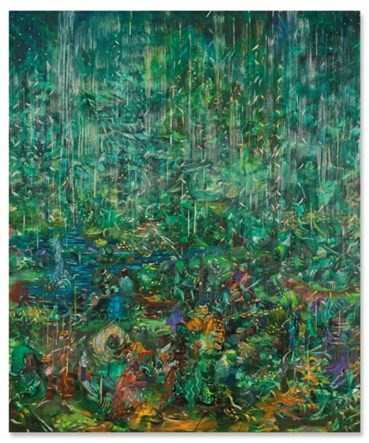
Obstruction 2
Estimation
£70,000
88,945 USD
-
£100,000
127,065 USD
Realized Price
£138,600
176,112 USD
63.059%
Sell at
Sale Date
Christie's
-
29 June 2023
